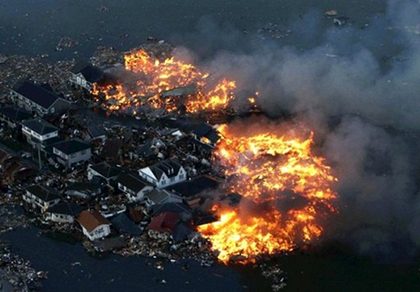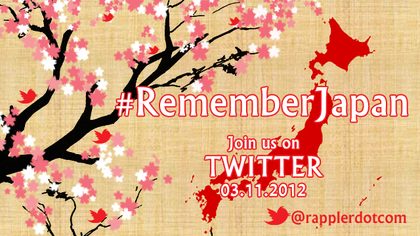SUMMARY
This is AI generated summarization, which may have errors. For context, always refer to the full article.

MANILA, Philippines – Given the unpredictable nature of disasters, Malacañang is unable to give an assurance it is 100% prepared for a disaster like the magnitude-9.0 earthquake that devastated Japan exactly a year ago on Sunday, March 11.
Deputy Presidential Spokesperson Abigail Valte, however, said the national government has learned its lessons, and one of these is that it cannot respond to disasters alone.
“It really is up to the local government units (LGUs) and the citizens as well,” Valte said in a phone interview with Rappler on the eve of the first anniversary of the Japan earthquake that triggered a tsunami of up to 8.5 meters as well as nuclear plant accidents.
Japan’s triple disaster left 15,829 persons dead, 5,943 injured, and 3,725 missing, according to the latest data from Japan’s National Police Agency. The disaster resulted in around ¥20 trillion or around P10.46 trillion in damages, said Japan’s deputy Cabinet secretary for public affairs, Noriyuki Shikata.
“The assurance we can give is that we are taking steps also (to prepare for such disasters),” Valte explained.
President Benigno Aquino III’s “marching orders” to front line agencies is to ensure zero casualties in the case of typhoons, she noted. “To some it may seem unrealistic but that is to impress on all frontliners the importance of the actions we must take.”
Interestingly, World Health Organization (WHO) data show the Philippines suffered more disasters than Japan, as well as the rest of Asia, in 2011.
Even with the Great East Japan Earthquake, the Philippines surpassed Japan in terms of the number of people affected by calamities like floods, storms, and earthquakes in that same year.
WHO reports that disasters adversely affected 1,147,270 Filipinos, about triple Japan’s 368,820.
PNoy admin’s steps
The measures the government has implemented to better respond to disasters include the following, according to Valte:
- The Department of Environment and Natural Resources’ work on geohazard maps
- The Philippine Atmospheric, Geophysical, and Astronomical Services Administration’s (Pagasa) “more or less reliable prediction” of typhoon tracks
- Pagasa’s coordination with the National Disaster Risk Reduction and Management Council
- The Department of Health’s pre-positioning of medicines in disaster-prone areas
- The Department of Public Works and Highways’ inspection of major bridges and roads

The President has recognized the importance of the environment, Valte said, as seen in the way he formed a climate change cluster in his Cabinet.
The government has allocated over P24-B for projects related to disaster response and climate, the Department of Budget and Management said.
Japan, a developed country, on the other hand, has allotted ¥18.4 trillion or P9.54 trillion for the rebuilding efforts after the Great East Japan Earthquake.
Lacking ‘experience’
Climate change experts echo Valte’s points about the responsibility of LGUs.
In Rappler’s newly launched show, #TalkThursday, an expert said the key is to build each local government’s concrete plans and apply these down to the barangay level.
“If we’re able to match our efforts with the local governments’ capacity-building at the local level, that will, of course, translate to national capacity,” said Manila Observatory executive director Antonia Loyzaga.
A number of municipalities, however, “lack practical experience on how to plan (for disaster risk reduction), how to prepare, and how to keep it going,” said Margareta Wahlström, United Nations (UN) secretary-general’s special representative for disaster risk reduction.
The UN considers the Great East Japan Earthquake a learning experience for the world.
Gov’t accountability
Netizens also joined the discussion on the first anniversary of the Great East Japan Earthquake through the hash tag #RememberJapan on Twitter.

Rappler through its Twitter account, @rapplerdotcom, asked netizens: How capable is @govph of responding to earthquakes like the one that struck Japan on March 11, 2011?
Twitter user @peterj0e said the government should create a “more extensive” map of disaster-prone areas. He also said it should incorporate disaster-preparedness training in the Department of Education’s modules, restructure the NDRRMC, and update standards like the Building Code.
Describing himself as an American expat who lives in Manila, @M_i_c_h_a_e_l for his part threw the question back to Filipinos. “Question is, do YOU accept (the) fact that @govph isn’t capable? Government only works as hard as you demand,” he said.
Netizens pointed out that Japan has recovered due to its characteristic resiliency.
Twitter user @tetalimcangco noted, “To be like Japan, @govph must have (the) will power and know the value of accountability. Then everything follows.” – Rappler.com
Add a comment
How does this make you feel?
There are no comments yet. Add your comment to start the conversation.